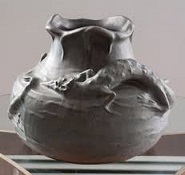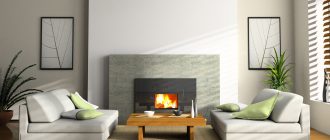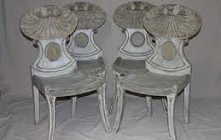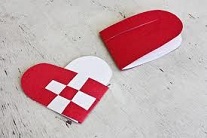Swedish pottery has for years fascinated all by its beauty and magnificence. Read our guide below for more facts and information on Swedish pottery…
Marieberg and Rotstrand were the two major Swedish potteries in the 18th century. Rotstrand was founded in the year 1725 and Marieberg in the year 1758. Earthenware, porcelain, vases etc were manufactured in these two factories and later from 1820, Rotstrand also manufactured flintware with transparent glazing.
Gustafsberg Faience
The year 1827 saw the establishment of Gustafsberg and it manufactured pottery items similar to Rotstrand. The specialty of Gustafsberg is the magnificent “parians” that are generally the imitations of renowned sculpted work. Gustafsberg is also renowned for its unglazed Wedgwood.
Marieberg Faience
It was introduced by Johann Eberhard Ludwig Ehrenreich who set up the factory on the island of Kungsholmen. Marieberg faience is elaborate and ornate. The flowers and intricate designs look splendid and are extremely difficult to design. The brilliant over-glazed colors were the USP of Marieberg faience. One of its unique specialties was a marbled glaze in vibrant colors of red, black, blue, violet, brown and yellow. Each pottery artifact is imprinted with “MB” and is surmounted with three crowns or alternatively with three crescents just above the initials of the painter. Later, Anders Stenman introduced transfer printing from Rotstrand. Tureens with applied flowers and fruits were produced and Rococo’s “terrace vase” was known to be the most unique faience production. The vase was beautifully embossed with applied flowers and had a flight of steps set on rocks at the base. At the foot, a rabbit was shown lying down. In 1782, it was bought by its arch rival Rotstrand and finally closed down in 1788.
Rotstrand Faience
It is also known as tin-glazed earthenware pottery and was established by Dane Johann Wolff. Rotstrand faience is known to be embellished with blue monochrome or imitated Italian white-on-white. In some pieces, strokes of purple or manganese are also seen. It was later in 1758 when polychrome decoration was introduced in order to combat Marieberg faience. “Famille rose” designs were the popular designs introduced then.
Törngrens Krukmakeri
Started by Törngrens in 1789, this is known to be the oldest pottery in Europe to date. The seventh generation is running the business as of now. The original workshop was started in Falkirk and even today, the production boasts of ancient designs and patterns in its artifacts. Sgraffito-technique was used in Törngrens pottery wherein white clay was laid over rodbrannade clay and then the fine decoration was carved on it. It had been called “Potters China” then. The traditional pattern featured linblomma and tulip prior to the first firing, then the artifact was glazed and finally a second firing was done.





